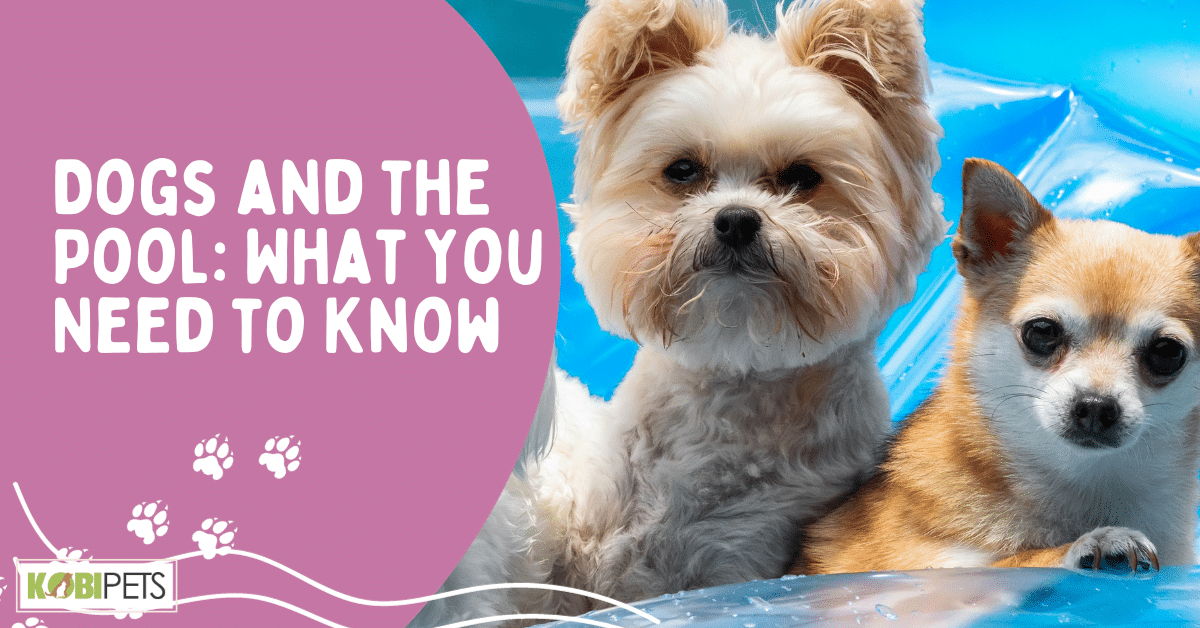
Dogs can find pools as refreshing and fun as humans, but it’s essential to prioritize their safety. Ensure your pup knows how to enter and exit the pool, and always supervise their play. Regularly check and clean their ears post-swim to prevent infections and ensure a healthy, joyful water experience.
Ever noticed your furry friend’s fascination with the pool? Dogs, like us, are naturally drawn to water. In this guide, we’ll explore why this happens and stress the vital need for pool safety for our canine companions. Let’s dive in!
Prepping Your Dog for Their First Swim
When introducing your dog to the water, take it one step at a time. Begin with shallow ends or kiddie pools where they can gradually get accustomed to the sensation of being in the water. Positive reinforcement, like treats and toys, can make the experience fun and rewarding, motivating them to explore further.
Keep an eye out for any signs of anxiety or fear, such as trembling or hesitance, and address them with patience and encouragement. By following these steps, you’ll ensure a comfortable and enjoyable introduction to swimming for your furry friend.
Remember, every dog is unique, and their comfort level in the water may vary. It’s essential to proceed at their pace and create a positive association with water activities to make their swimming journey a delightful one.
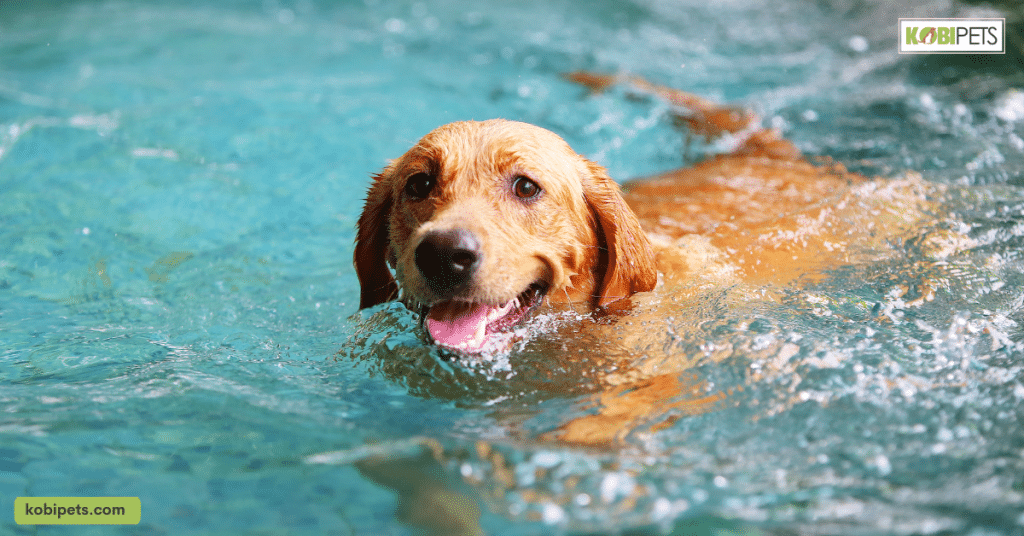
Safety Measures Inside & Around the Pool
As a responsible dog owner, it’s imperative to prioritize your furry friend’s safety when they’re near the pool. While swimming can be a fantastic activity for dogs, it comes with its own set of risks. In this section, we’ll delve into the crucial safety measures that every dog owner should be aware of to ensure their canine companion enjoys the water safely.
Safety Measures
The importance of a supervised swim: Dogs are known for their curiosity and unpredictable behaviors. When they’re near a pool, it’s absolutely vital never to leave them unattended. Even strong swimmers can get into trouble, and quick action is essential to prevent accidents. Whether your dog is an experienced swimmer or a novice, your watchful eye can make all the difference in ensuring their safety.
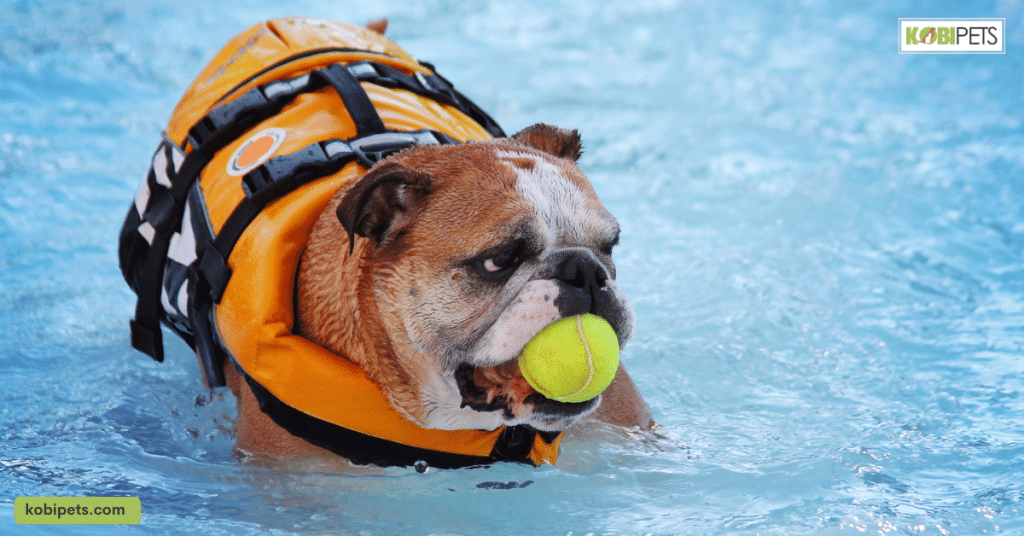
Pool Barriers and Alarms
Adding extra layers of protection around your pool area is a wise precaution. Installing secure pool barriers, such as fences or gates, can help prevent unsupervised access. Furthermore, consider investing in pool alarms that alert you to any unexpected movement in the water. These technological safeguards can provide an additional level of security, particularly if you have a particularly adventurous or curious pup.
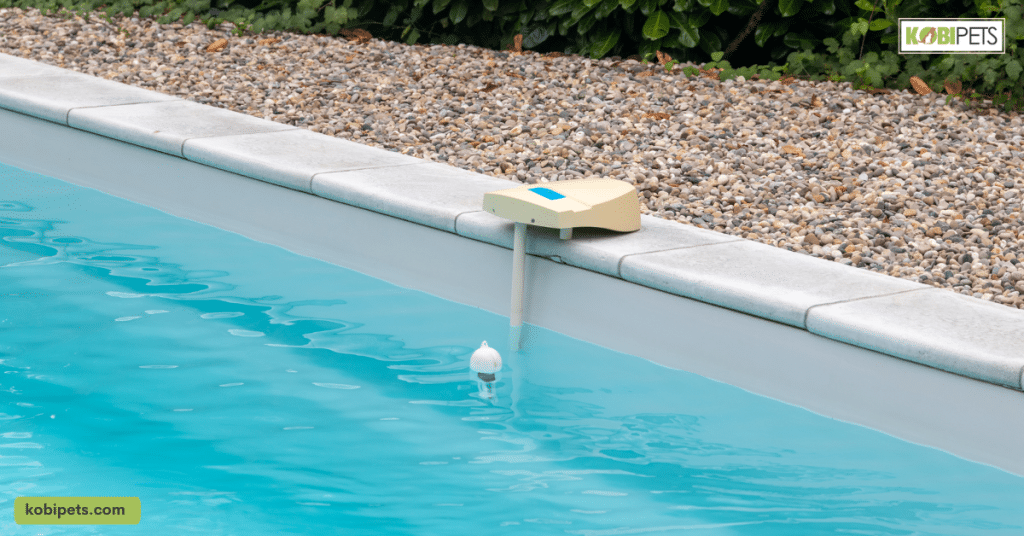
Life Vests and Flotation Devices for Dogs
Just as humans use life vests for safety in the water, dogs can benefit from them too. Life vests and flotation devices designed specifically for dogs offer buoyancy and support, making swimming safer and more enjoyable for your four-legged friend. They are especially important for dogs with limited swimming experience, senior dogs, or breeds not naturally inclined to swim. Always ensure the proper fit and comfort of the vest for your dog.
Incorporating these safety measures into your dog’s poolside experience is not only responsible but also a loving gesture. By supervising their swim, securing the pool area, and considering the use of life vests when needed, you create an environment where your dog can frolic and cool off without worry.
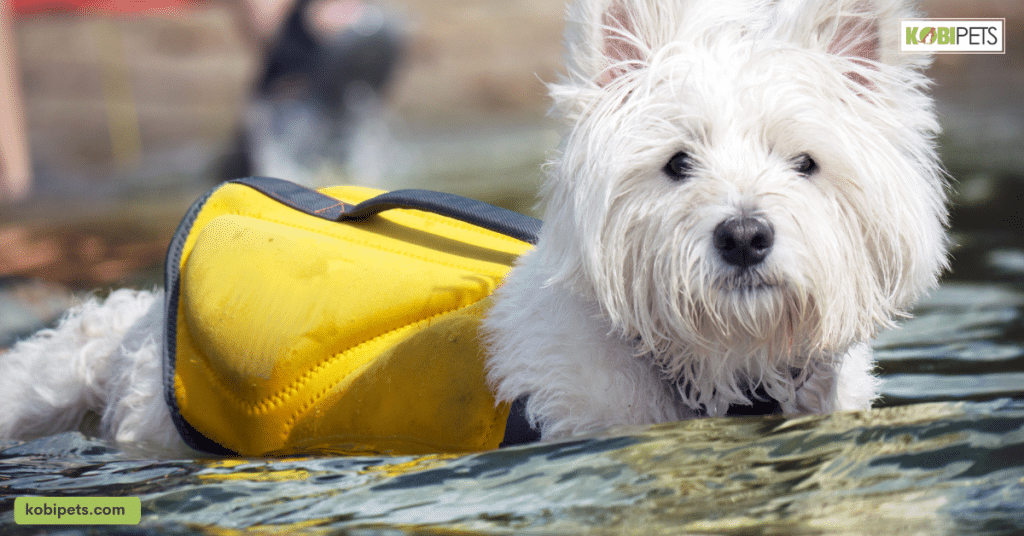
Teaching Essential Water Skills
Ensuring your dog has the necessary water skills is fundamental to their safety and enjoyment in the pool. In this section, we’ll explore how to teach your canine companion vital water skills.
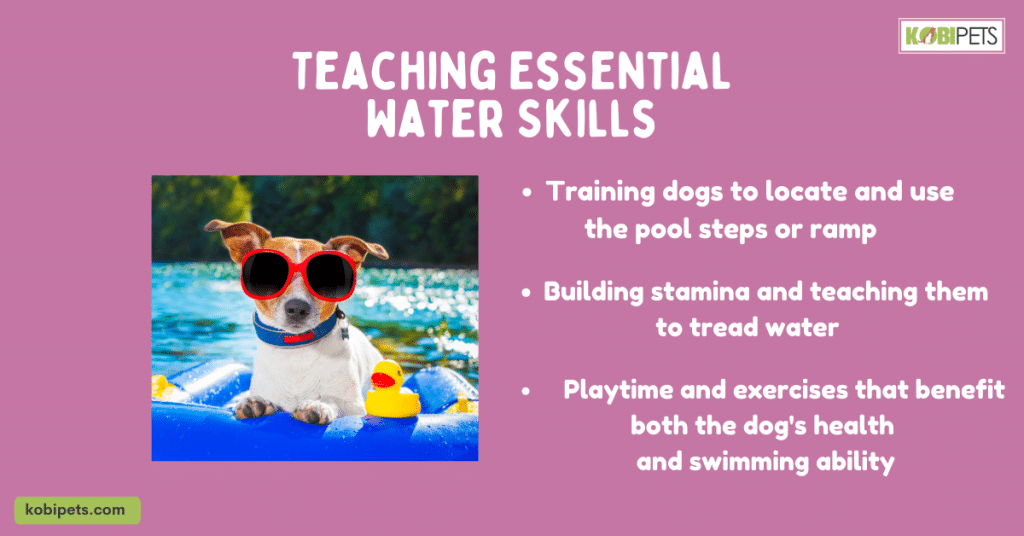
Teaching Essential Water Skills
- Training dogs to locate and use the pool steps or ramp: Familiarizing your dog with pool exits is crucial. Start by gently guiding them to the steps or ramp and encouraging them to climb out. Repeat this process until they can confidently find their way out of the pool.
- Building stamina and teaching them to tread water: Not all dogs are natural swimmers, so it’s essential to help them build stamina. Begin with short swimming sessions, gradually increasing the duration. Teach your dog to tread water to conserve energy and stay afloat.
- Playtime and exercises that benefit both the dog’s health and swimming ability: Swimming isn’t just about safety; it’s a fantastic form of exercise for your furry friend. Engage in water games and exercises that promote muscle strength and cardiovascular health.
By focusing on these essential water skills, you’ll not only enhance your dog’s safety but also create a positive and engaging aquatic experience that both you and your furry friend can enjoy to the fullest.
Post-Swim Care: Keeping Your Dog Healthy
After the exhilarating pool time with your pup, it’s crucial to ensure their well-being with proper post-swim care. This section covers three essential aspects of maintaining your dog’s health after a dip:
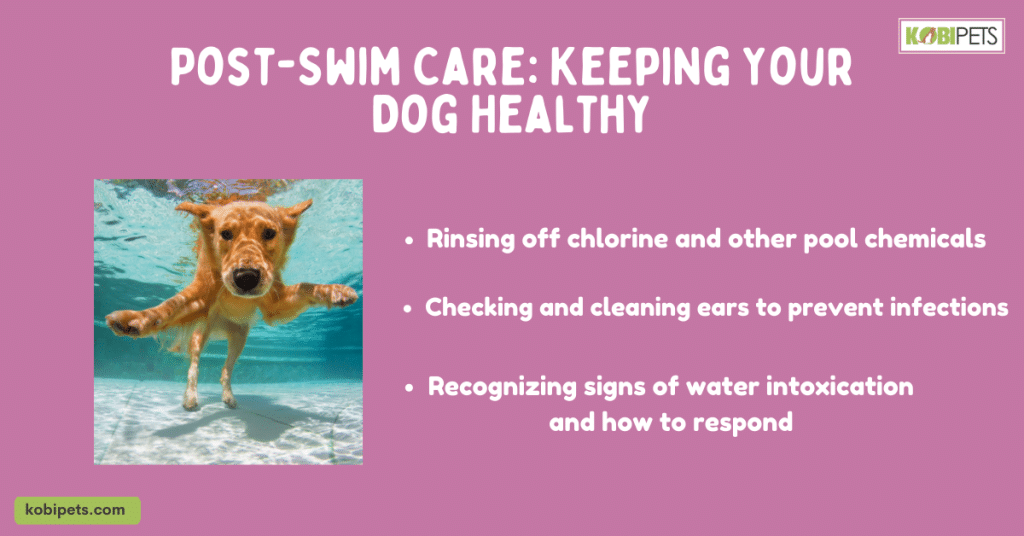
Post-Swim Care: Keeping Your Dog Healthy
- Rinsing off chlorine and other pool chemicals: Chlorine and pool chemicals can be harsh on your dog’s skin and coat. A thorough rinse with fresh water helps remove these substances, preventing skin irritation or discomfort.
- Checking and cleaning ears to prevent infections: Moisture in the ears post-swim can create a breeding ground for bacteria. Regularly inspect and clean your dog’s ears to prevent infections, especially if they’re prone to ear issues.
- Recognizing signs of water intoxication and how to respond: While rare, water intoxication can be dangerous. Watch for symptoms like excessive drooling, lethargy, or loss of coordination. If you suspect water intoxication, seek immediate veterinary attention.
By incorporating these post-swim care routines into your dog’s poolside adventures, you’ll ensure their health and happiness, making each swimming session a safe and enjoyable experience.
Conclusion
In wrapping up our exploration of dogs and the pool, it’s essential to reflect on the incredible opportunities that pool activities offer for both you and your canine companion.
The joy of watching your furry friend splash and play in the water, the laughter it brings, and the unique bond forged through shared pool moments are priceless. These experiences not only provide physical exercise but also mental stimulation, contributing to your dog’s overall well-being.






